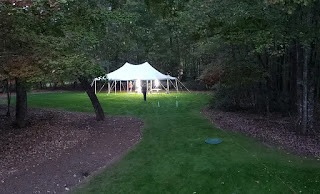Location, Location, LocationLocation has always been the top three things you look for when purchasing a property. It is also very important when choosing a grass type for your lawn.
If you live in Virginia, you live in what is called a "Transition Zone." Simply put, this is where the climate transitions from Cool to Warm season. The transition zone roughly extends from the Northern part of West Virginia to the middle of Georgia. It is very tricky to grow grass in the transition zone and here is why:
Warm season grasses such as Zoysia, Bermudagrass, Bahaigrass, Centipede, St. Augustine, etc... need hot conditions to thrive year round. It is true you can establish a few of these grasses in Virginia, but they go dormant during the winter leaving your lawn an unsightly brown for many months.
Cool season grasses include Kentucky Bluegrass, Rye, Tall Fescue, Fine Fescue, Creeping Red Fescue, etc... These grass thrive very well in Spring and Fall in Virginia, but really struggle when the soil temperatures get into the 80's. They also can't stand full sun without some sort of break during the summer. This intolerance leads to annual reseeding in the Fall.
So to all of us branded Transition Zone Dwellers, we have to pick our poison. Do we have an ugly lawn in the Winter, or an ugly lawn in the Summer.
Compromises
All of life is a compromise, so your lawn is no exception. I have found you can live with either of these choices, but concessions have to be made. If you choose a warm season grass like Bermudagrass or Zoysia, you have to plant in the Summer. To keep the lawn from browning in the Winter, you can seed this lawn with Rye or Fescue in late October. The cool season grass will come in an thrive over the winter. The result is a nice green lawn for quite a while. When the hot weather comes, the warm season grasses take over the the cool season die off and cosmetically only an expert would ever tell the difference.
If you prefer a cool season lawn, then plant with Tall Fescue in September or October. When June comes around, make sure the lawn gets plenty of daily, short, frequent watering and plant some trees. The rotating shade break is usually all they need.
Sunday, January 10, 2021
What is a Transition Zone and How Does It Affect My Lawn
Subscribe to:
Post Comments (Atom)
2020 Challenge of the Year
The Challenge In September of 2020, I was approached by a customer to grow a nice, lush green lawn for his daughter's wedding. Normall...

-
The Challenge In September of 2020, I was approached by a customer to grow a nice, lush green lawn for his daughter's wedding. Normall...
-
Brown Patches in November/December I get calls all the time from customer worried about their lawns. They typically go something like this...
-
Starting with brown spots, Liriope may develop brown, withered foliage during winter in some areas. Also the fungal disease anthracnose m...




No comments:
Post a Comment
Note: Only a member of this blog may post a comment.